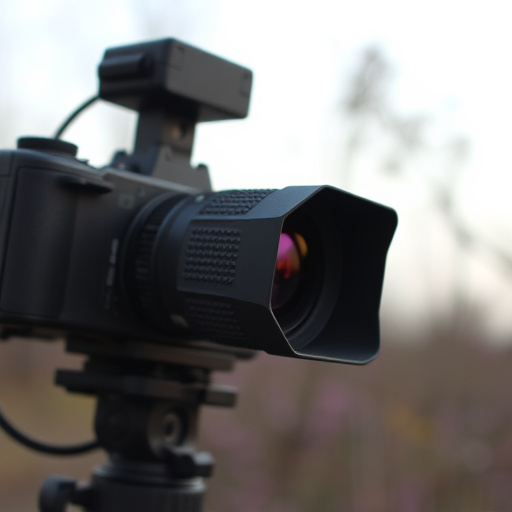In the digital age, spy cameras with cloud storage offer both benefits and significant privacy risks. As these devices become more prevalent, it's crucial to raise awareness of security vulnerabilities. Advanced non-invasive scanning techniques like thermal imaging and RF signal analysis help detect hidden cameras. Integrating spy cameras with cloud storage has revolutionized signal detection through real-time data collection and advanced algorithms. However, the rapid development of such technology raises ethical concerns and privacy issues, necessitating robust legal frameworks to protect digital privacy rights.
Uncover the insidious world of hidden recording devices with our comprehensive guide. From understanding the risks posed by spy cameras to exploring non-invasive scanning techniques, this article delves into cutting-edge methods for detection. We uncover advanced signal detection utilizing cloud storage as a powerful tool in the fight against clandestine surveillance. Additionally, we navigate ethical considerations and privacy laws, highlighting the importance of awareness in today’s digital landscape, especially with the integration of Spy Camera With Cloud Storage technology.
- Understanding Hidden Recording Devices and Their Risks
- Non-Invasive Scanning Techniques for Spy Cameras
- Advanced Signal Detection Using Cloud Storage
- Ethical Considerations and Privacy Laws Surrounding Hidden Camera Detection
Understanding Hidden Recording Devices and Their Risks
Hidden recording devices, often referred to as spy cameras, present a unique challenge in today’s digital era. These compact and sophisticated gadgets can be concealed almost anywhere, posing significant risks to privacy. From home security to corporate espionage, their versatility is both a blessing and a curse. With advanced features like cloud storage, some models allow remote access and real-time monitoring via the internet, making it easier for users but also creating new vulnerabilities.
The proliferation of spy cameras equipped with cloud storage capabilities necessitates heightened awareness. While they offer convenience, they can be exploited by malicious actors to capture sensitive information without consent. Understanding the potential risks associated with these devices is crucial for individuals and organizations alike to implement robust security measures and protect their digital footprint from prying eyes.
Non-Invasive Scanning Techniques for Spy Cameras
Non-invasive scanning techniques are becoming increasingly important in the detection of hidden recording devices, especially spy cameras with cloud storage capabilities. These advanced methods allow for thorough inspections without causing any damage or disruption to the area being scanned. One such technique involves using advanced thermal imaging technology. Spy cameras often generate heat due to their electronic components, and this heat signature can be detected by thermal sensors. This method is particularly useful in identifying hidden devices that might be disguised as everyday objects or embedded within walls or ceilings.
Another innovative approach leverages radio frequency (RF) signals. Many spy cameras transmit data wirelessly, leaving unique RF signatures that can be scanned for. Non-invasive scanning tools can detect these signals and pinpoint the source, even if the camera is hidden behind dense materials or in difficult-to-reach spaces. This method is especially valuable when combined with cloud storage analysis, as it allows investigators to track down devices that have been remotely accessed or data transmitted through remote servers.
Advanced Signal Detection Using Cloud Storage
In the ever-evolving landscape of surveillance technology, advanced signal detection methods have become paramount in identifying hidden recording devices. One innovative approach leverages cloud storage to enhance scanning capabilities significantly. By integrating spy cameras with cloud storage, real-time data collection and analysis are made possible. This enables experts to detect subtle signals that might otherwise go unnoticed, utilizing powerful algorithms to process vast amounts of data stored in the cloud.
Such a method offers several advantages, including remote accessibility, improved accuracy, and efficient pattern recognition. With data streamed and stored centrally, investigators can access and analyze signals from anywhere at any time, eliminating geographical constraints. This technology also facilitates more comprehensive scanning by allowing for cross-referencing of patterns against a vast database, enhancing the chances of detecting even the most sophisticated hidden recording devices.
Ethical Considerations and Privacy Laws Surrounding Hidden Camera Detection
The ethical implications and privacy concerns surrounding hidden camera detection are significant, especially with the advent of sophisticated Spy Cameras With Cloud Storage. As technology advances, so does the potential for invasion of privacy, making it crucial to establish clear guidelines and legal frameworks to combat this issue. The use of hidden recording devices raises serious ethical questions, as they can infringe upon individuals’ right to privacy and create an atmosphere of mistrust. These cameras, often covertly placed in public spaces or private homes, capture intimate moments without consent, leading to potential abuse of personal data and images.
Privacy laws play a vital role in addressing this challenge. Many countries have implemented regulations to protect citizens from illegal surveillance, such as the Video Surveillance Act or similar legislation. These laws outline permissible uses for hidden cameras, emphasize the need for transparency, and specify conditions under which recorded data can be stored and accessed. With cloud storage capabilities, Spy Cameras become even more concerning, as they can facilitate unauthorized sharing and distribution of personal content on a global scale. As such, legal measures must keep pace with technological advancements to ensure privacy rights are upheld in the digital age.
Hidden recording devices pose a significant threat to privacy, but advanced scanning methods offer promising solutions. Non-invasive techniques and cloud storage integration enable efficient detection of spy cameras, enhancing security measures. While ethical considerations and privacy laws must be respected, these innovative scanning methods represent a step forward in combating the use of hidden recorders. By leveraging technology responsibly, individuals can protect their personal spaces and maintain a higher level of confidentiality in today’s digital age.
